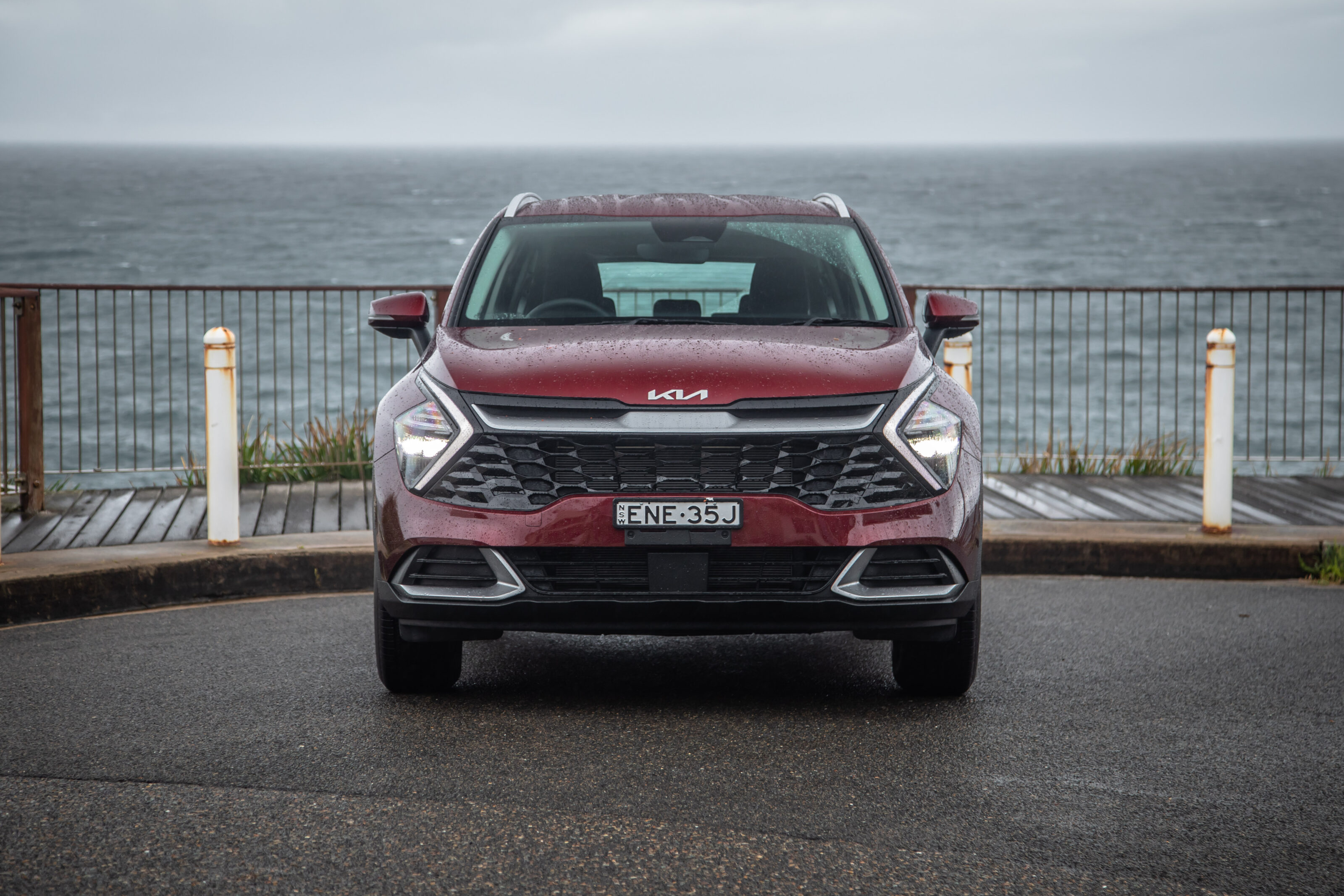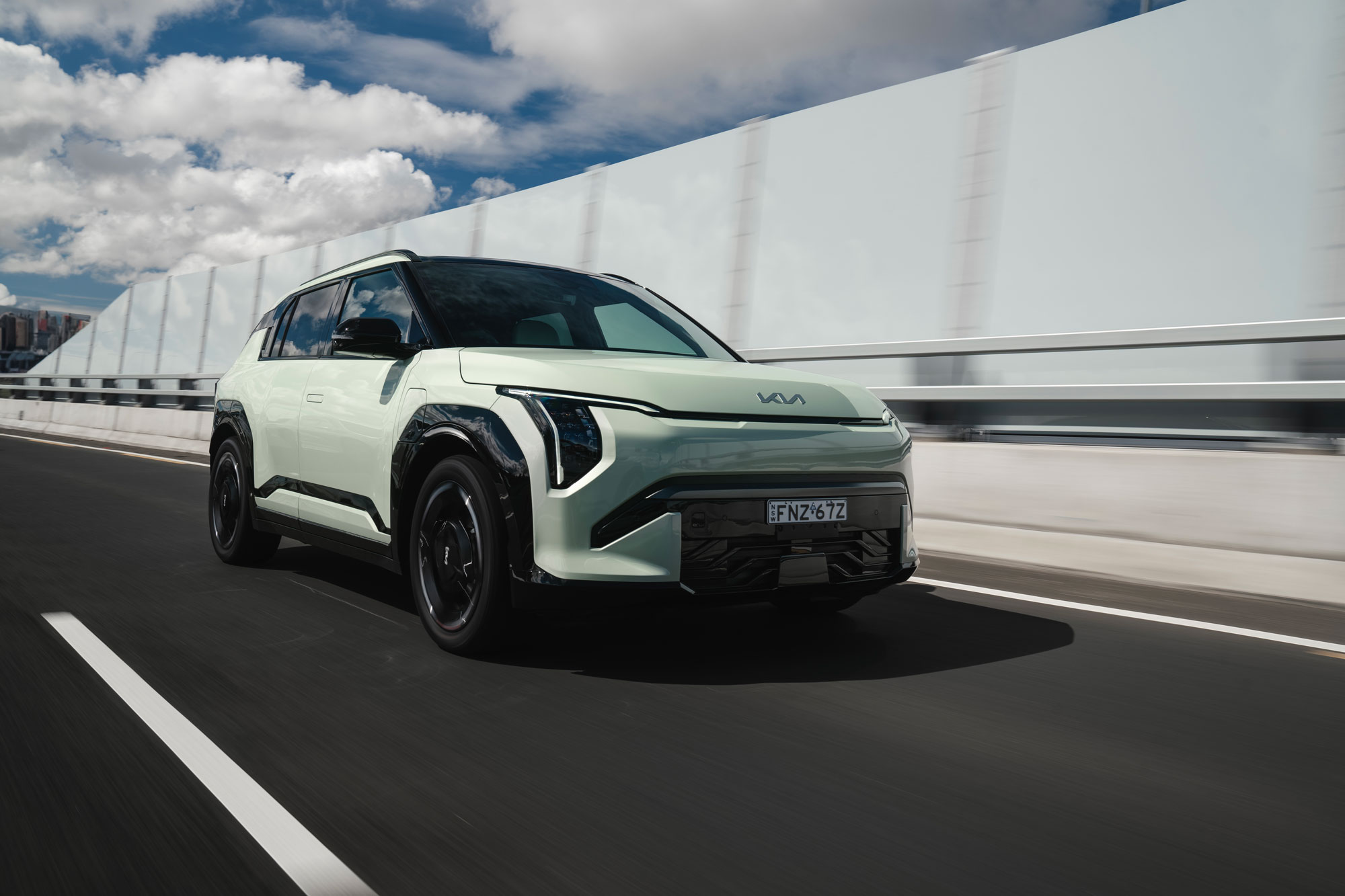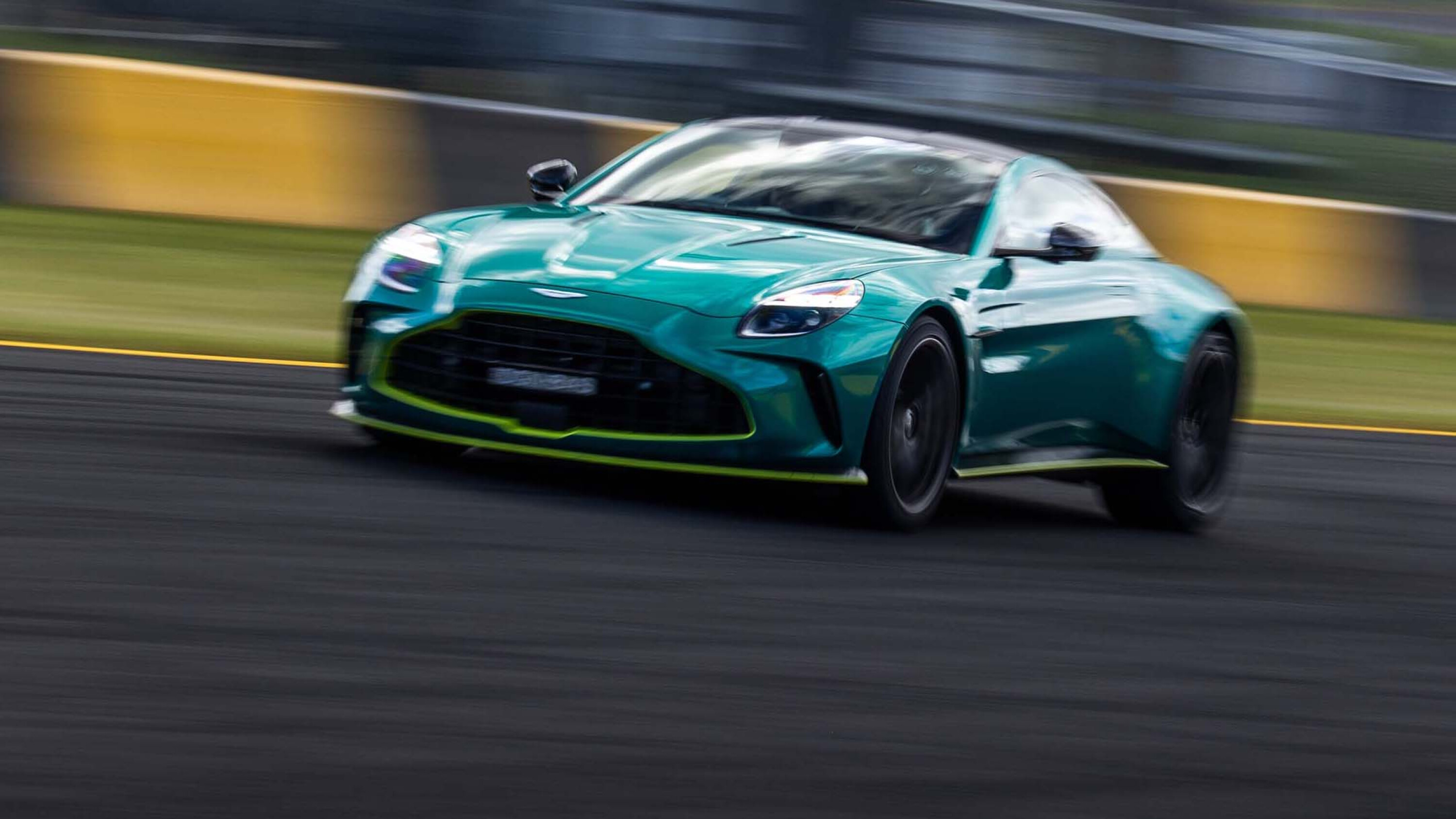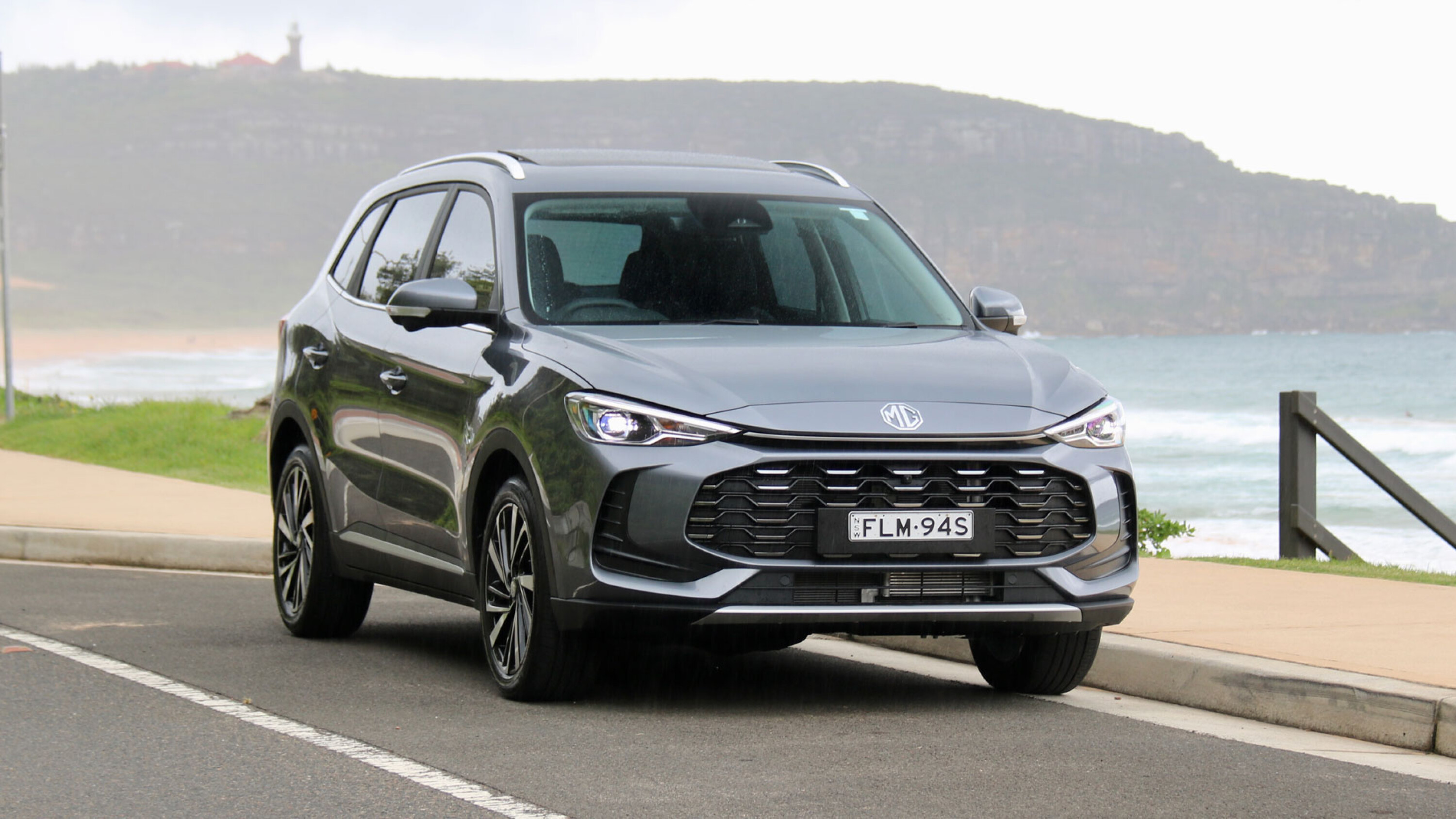
Score breakdown
Things we like
- Build quality, excellent space and comfort
- Huge displays add a techy, premium feel
- Torquey diesel partners well with slick auto and all-wheel drive
Not so much
- Wireless charging but only wired Carplay & Android
- Nothing clever about the rear storage
- Fuel use higher than expected
Welcome
Price as tested: $55,510 (drive-away, including $520 premium paint) Fuel since collected: 10.1L/100km @ 258km (2020km on odo)
What is it with Korea right now? From the widening range of warm and hot sports variants in the Hyundai and Kia line-ups, to the growing number of electrified models and the genre-bending design risks of their latest models, the Republic’s on a roll.

I’ve just come out of five months in the new-gen Hyundai Tucson, in both 2.0-litre petrol and 2.0 turbo-diesel forms – along with a week in the 1.6 turbo petrol – concluding that the diesel is comfortably the pick of the bunch for power and fuel consumption.
Now I’m moving into its newly launched alter-ego, the 2022 Kia Sportage, which I’ll hold onto for a few months. This again is a 2.0-litre turbo-diesel, configured in all-wheel-drive form with Hyundai Motor Group’s own in-house eight-speed torque-converter automatic.
That diesel delivers 137kW and 416Nm, with official fuel figures of 6.3L/100km on the combined cycle. I’ve mostly done local urban driving so far, which is claimed at 7.7L/100km – whereas I’ve been getting 10.1L/100km. Out here in reality, that’s the number I’d expect for me, but more relaxed drivers should come a little closer to the claim.
Where I previously drove the easily recommended mid-range Tucson Elite, this is the top-shelf and very pricey Sportage GT-Line – $52,370 before on-road costs, listed at the time of writing with a national drive-away price of $54,990. I’m driving it in Jungle Wood Green, a $520 paint option.

This spec is up $2380 over its predecessor, but it’s a lot more car, too. Where previously there was only one wheelbase, the global 2022 Sportage line gets both a shorty and a stretch – although Australia rightly gets only the latter. At 2755mm, the new local model’s footprint is 85mm longer than the stumpy (sorry, ‘sporty’) body we got before.
The new Sportage measures 4660mm long overall, compared to 4485mm for its predecessor, resulting in 77 litres more boot space at 543L. (That’s an extra 68cm rolling carry-on case for your next flight.)
What is it with Korea right now? From the growing number of electrified models and the genre-bending design risks of their latest models, the Republic’s on a roll.

Standout features for the flagship of this new generation includes a pair of glorious 12.3-inch displays – one for the driver, one in the centre of the dash – embedded in a long curved panel that evokes thoughts of Mercedes-Benz and the new VW Touareg. Good company to be in.
Other interior highlights include leather seats with a lovely suede upper section, ventilated and heated front seats, powered driver and passenger seat adjustment, ambient lighting, a panoramic sunroof, bird’s-eye surround-view camera display, and wireless phone charging – but only wired Apple CarPlay and Android Auto, whereas the entry-level S variant gets wireless connectivity but no charging pad. Let that sink in.

From the outside, the top-shelf Sportage stands apart with 19-inch alloy wheels, dual-LED headlights, a subtly different grille pattern and unique styling for the lower bumper garnish at both ends. To this writer’s eye, the design of that lower garnish looks a little out of place on the GT-Line, whereas the version applied to the S appears sportier and better integrated.
Already standard kit from the entry S model is blind-spot monitoring, adaptive cruise control, speed-limit sign reading, lane follow assist, lane-keep assist, rear parking sensors and a (still uncommon) front centre airbag, while the SX adds dual-zone climate control, rain sensors, front parking sensors, auto front windows (no variant has auto rear windows), and the SX+ adds Harman Kardon audio, LED fog lights, paddleshifters, automatic gesture tailgate, keyless start and tinted rear glass.
There’s also a full-size spare under the floor of that bigger boot.

First impressions of this new Sportage are good. Because, look, spoiler alert: it’s a really good car that rides comfortably and pulls hard. Interior fit and finish, and materials, are all of the segment-best standard that we’ve come to expect – although there’s the little things that stand out for the easily disappointed: no soft knee pad for the driver, hard plastic window sills in the second row, near-useless bag hooks in the boot… all things I’ll look at it in more detail as we go.
In the years ahead, the Sportage will face not only compelling current-gen rivals like the popular RAV4, Forester and CX-5, but also the newly launched Outlander and incoming new X-Trail. It appears worthy, but the next few months will be telling.
Update 1: On the Road
Fuel since collected: 9.0 L/100km @ 873km (2893km on odo)

There are three powertrains in the new Kia Sportage line-up, but only one of them is properly deserving of your attention: this 2.0-litre turbo diesel.
The naturally-aspirated 115kW/192Nm 2.0-litre petrol mill and six-speed auto combo at the entry end of the range is a stressed price leader, while the usually impressive 132kW/265Nm 1.6 turbo petrol and seven-speed dual-clutch auto occasionally feels overwhelmed in a family SUV that weighs a few hundred kilos more than its best application in the Cerato GT hatch.
So where the 2.0 petrol is best left to corporate fleets and the 1.6 turbo petrol at least deserves consideration, this 2.0 turbo diesel with its eight-speed automatic is unquestionably ‘the pick’ for effortless driving – although it comes at a $7000 premium over the 2.0 petrol in the entry S grade and a $3000 premium over the 1.6 turbo petrol in the SX+ and GT-Line trims.

Like the identically-powered Hyundai Tucson diesel I spent time with before, this Sportage is responsive, to the point it can sometimes surprise in its eagerness to leap off the line. To its credit, it achieves this without feeling unpleasant, delivering progressive pull.
There’s a reassurance in big torque that owners of underengined cars can’t appreciate, and it’s that quick getaway and confident overtaking ability that makes this engine so compelling.
There are selectable drive modes available, including a ‘Terrain’ set I haven’t tested yet, but the others are barely needed. Eco doesn’t add much of a saving and Sport is unnecessary – because Normal is just right.
In its on-road character, the new Sportage marks a significant improvement over its predecessor – and, really, that older model had few foibles to begin with.

That eight-speed auto – a torque converter rather than the dual-clutch unit offered in the bigger Sorento – will very occasionally hunt for gears when pushed hard, but it is mostly a smooth shifter and one Kia can be proud of.
The Sportage diesel’s competence is completed with on-demand all-wheel drive, but unlike that Tucson with which it shares so much, the Sportage benefits from Kia Australia’s local ride and handling – a program Hyundai has dialled back, claiming its global tune is already spot-on.
In its on-road character, the new Sportage marks a significant improvement over its predecessor – and, really, that older model had few foibles to begin with.

Indeed, even compared to the Tucson, the Sportage feels more planted than the slightly heavier Hyundai (1773kg to 1759kg), while handling potholes and undulations with a touch more grace – even on its big 19-inch wheels and Nexen Roadian GTX 235/55 ‘touring’ rubber. And while I’m not one to treat a midsize SUV like a sports car, the Sportage is surprisingly flat when pushed through the lovely winding hills of Melbourne’s outer east.
Cabin insulation is good, aided by a fairly refined engine that combines to keep the traditional diesel rattle out. Wind and road noise are also well suppressed, and with the GT-Line grade’s already impressive interior trim, it all makes for a neatly premium experience.
More on that interior in our next instalment.
Update 2: The Great Indoors
Fuel since collected: 7.2 L/100km @ 1608km (2020km on odo)

Our long-term 2022 Kia Sportage has piled on another 1600km, serving not only as my family car, but also as support for Wheels Car of the Year and Motor Performance Car of the Year testing.
A significant chunk of that travel came on the highway – where diesels are at their best and motoring journo diets are at their worst – and fuel consumption for our 2.0-litre turbo diesel Sportage has fallen to a respectable 7.2L/100km as a result (down from 10.1L/100km in our last instalment, of mostly urban driving).
All that road trippin’ provided ample opportunity to consider the cabin of this new Korean, which now rides on a longer wheelbase for its exclusively five-seat design.

Up front, long-distance driving is aided with good shoulder and head space, seat bolstering well-suited to overfed Aussies, and good under-thigh support. The cushions of the seats are a tad firm, but not uncomfortable, and while the “leather-appointed” upholstery lacks any sense of luxury, it doesn’t feel cheap.
To Kia’s credit, the suede-like fabric across the shoulder of the front seats adds more than a little premium flair and feel. I would’ve liked to see this applied to other surfaces in the cabin – and really any sort of padding at all to either of the knee-contact surfaces of the centre console and the door plastics.
In this spec, the Sportage gets a grippy rotary gear shifter, and while it’s only plastic – the look and feel helps to boost an already attractive interior

The steering wheel of our GT-Line trim has a nice faux-sporty feel for those into dreaming of quicker things, and the spoke-mounted media and cruise controls are easy to master – although flicking down rather than up for skipping to the next song feels counterintuitive.
In this spec, the Sportage gets a grippy rotary gear shifter, and while it’s only plastic – you’ll find a classy knurled jewel-like treatment for the Tucson’s rotary shifter – the look and feel still helps to boost an already attractive interior.
We’ll talk more about infotainment next month, but it’s worth adding here that the GT-Line’s huge infotainment displays – yes, two of them in a very Mercedes-like arrangement – really complete that advanced look, although the main display could stand to be just a few centimetres closer to my driving position…

Rear comfort doesn’t miss out on much, with generous knee and toe room behind my five-foot-nine driving position, and even a taller driver would leave plenty of space behind. Head room suffers a little in the second row, however, with my hair rubbing against the curved outboard edge of the ceiling.
You’ll squeeze three fit adults across the second row without too much complaint, but don’t expect to get much of an adult into the centre if you’ve got a child seat in both outboard spots. (There are two ISOFIX positions in total.)
Storage up front is good, with a covered cubby ahead of the gear shifter, big cup holders, another cubby behind those, a good-if-not-cavernous space under the centre armrest, and a passable glovebox. The doors get narrow document and bottle holders, and a handy enclosed space in the hand grab.

Rear passengers get a tight map pocket and bag hook on the front seatbacks, a clever coat hanger on the front headrests, tight cup holders in the dropdown centre armrest, bottle holders in the door, and another handy space in the hand grab.
There’s 543 litres of storage in the back with the rear seats up, growing to 1829L with those seats folded – and this is all with a full-size spare under the floor. That first number beats the related Tucson’s 539 litres by just one family-sized ice cream tub, while the latter falls short of Hyundai’s impressive 1860-litre claim.

Importantly, the new Sportage’s storage capacity comfortably hoses the old short-wheelbase Sportage’s 466/1455L boot, and it’s a convincing rival to popular offerings like the RAV4 (580L seats up, no seats-down figure claimed), and the CX-5 (442/1342L).
There are no clever tricks to the rear storage area’s design, however, with its versatility limited to a couple of awkwardly designed bag hooks and whatever you can fit in and around the spare wheel.
Next month: infotainment done right… mostly.
Now connecting
This month: 432km @ 7.8L/100km Overall: 2913km @ 8.3L/100km
These days, there’s a significant divide among car brands when it comes to the look and feel of their infotainment suites.
Some work to keep the investment down, mindful that (probably) most buyers are rarely going to use the main interface, so prevalent is Apple CarPlay and Android Auto. Indeed, many car reviews gloss over the infotainment factor, noting simply that the popular phone mirroring systems are onboard before moving on to ‘more important’ aspects of the car.
Others – in this case, our new 2022 Sportage – treat infotainment as a critical piece of the overall package, knowing buyers have come to expect a stylish, speedy and simple interface on every screen in their lives.

In the case of our Sportage, and all new Kia models, this means a mix of novelty and a deceptively basic interface with all the key functions falling intuitively to hand.
Our top-shelf GT-Line variant gets two huge displays in the dash, both 12.3 inches, which is about as big as most landscape-oriented infotainment screens get right now.
On ignition, you’re greeted with a stylish animation of the new KIA (or is it KVI?) logo streaking across the screens before settling in to a conventional digital instrument cluster behind the steering wheel and, for the main display, a tastefully clean view that looks like it could be the box-fresh lockscreen on your phone.

It’s not merely cosmetic, though: the bottom-right corner of the display is dedicated to a subtle, simplified map of your current location – and just like the main maps screen, it moves as you drive. It’s not especially useful, but it’s a thoughtful design piece.
With a swipe from the right, the main display reveals two rows of icons, offering quick access to key functions. There’s a charmingly ’80s colour theme of pink-and-blue gradients to the icons, drawn to look as though they’re made of neon tubes.
There’s little to be said about each individual ‘app’, except to note that all work intuitively and fast. The radio features FM, AM and DAB+ digital bands as expected, with the latter suffering the same pitfalls as all digital radio systems: unpredictable reception, and none at all in long tunnels.

And, of course, there’s Apple CarPlay and Android Auto. Frustratingly, both require a wired connection despite the vehicle having wireless charging – yet Kia’s cheaper, lower-spec models get wireless connectivity and no charging pad. It’s a parts-sourcing issue, but it might still leave you feeling a little ripped off.
The Sportage also features a clever third display that flips between audio and air-conditioning controls as needed, although it does mean you miss out on physical switches for these controls. You can, however, define one of those two control sets as the default, switching back to that screen automatically.
The instrument cluster behind the steering wheel presents a clear and easily understood interface, with a wide centre pane devoted to trip details, fuel consumption, speed, navigation and the vehicle’s best guess at your attentiveness – handy for long road trips.
That big driver display features a few stylish designs depending on which driving mode you’ve selected, with additional views including a mean race look in sports mode and a green-hued design in eco mode.

There are some shortcomings, though: the instrument cluster can’t be customised in any significant way – that generally remains the domain of premium brands – and there’s no head-up display projected onto the windscreen.
On the safety front, the Sportage gets all the latest tricks as detailed in my first instalment (head to whichcar.com.au/kia/sportage to catch up), but one particular area stands out as a welcome improvement over the same feature in its Hyundai-badged platform mate, the new Tucson: lane-keep assist. In both SUVs, the lane-keep assistant can detect road lines and the edge of the road, and pull you back away if you get too close to either.
But, where the Tucson can be infuriatingly sensitive and aggressive in its action and loud in its alerts, the Sportage beeps less often and more quietly when it does, while tugging more gently at the wheels – a polite assistant rather than a grumpy chaperone. That alone could be a deciding factor for some buyers.
The end
This month: 512km
Overall: 8.3 L/100km @ 3425km
You needn’t go back too far into Kia’s history to find the last time it was seen by most as a ‘cheap and cheerful’ option for budget-driven buyers, lacking Toyota and Honda’s long record of reliability, or the ‘Australia’s own’ appeal of Holden and Ford.
Well, Holden’s gone, Ford might as well be the Ranger company for all the effort it puts into selling the Escape, and Kia is now right in the mix with Toyota and Honda when it comes to key metrics like quality, packaging, power, comfort and technology.
Indeed, in a recent Wheels comparison test with a couple of old faithfuls, the Subaru Forester and Mitsubishi Outlander, Kia’s new Sportage scored an equal first-place result with the Forester.

Already in 2022, with production constraints and chip shortages ravaging the market, Kia has sold 3936 Sportages in Australia – well behind the ever-popular Toyota RAV4 (10,489) and Mazda CX-5 (8250), but only a little behind the Outlander (4644).
That result gives the Sportage fourth place in the hotly competitive medium SUV segment, leading long-time favourites like the Forester (3455), Nissan X-Trail (2027), Honda CR-V (1949) – and even its own stablemate, the Hyundai Tucson (1922), whose edgy new looks might be a little too showy for conservative Australia.
Kia’s Australian arm would tell you it could sell plenty more Sportages if it could get them. Supply has been a long-running complaint for the local chief operating officer, Damien Meredith, who reckons there is enough demand here for 1500 cars per month – around double the Sportage’s current monthly sales. It appears safe to say Australian buyers have woken up to Korean offerings.

Still, it’s hard to recommend every drivetrain in the new Sportage line-up. The entry-level engine is a 115kW/192Nm 2.0-litre naturally-aspirated petrol, matched to a six-speed torque converter auto and front-wheel drive. It’s not a complete wimp, but it’s easily stressed and best left to price-led fleets.
The next option, a 132kW/265Nm 1.6-litre turbo petrol unit with a seven-speed dual-clutch automatic, is one that usually impresses in Kia’s smaller models but feels a little outmatched with the heavier Sportage and all-wheel drive.
However, if your budget extends to that 1.6 turbo petrol’s $46,990 starting point for the SX+ grade, it’ll also get you into the $45,490 (both prices drive-away) SX with its 137kW/416Nm 2.0-litre turbo diesel. The SX misses out on some of the luxury-focused features of the SX+, but we’d argue the diesel is worth the compromise. If you want those tricks included, it’ll be $49,990 drive-away.

It’s the top-shelf GT-Line we’ve been driving here, of course, and while it demands a pretty penny at $55,510 on the road (and another $520 for the premium metallic ‘Jungle Wood Green’ paint), it’s proven tough to fault.
With that torquey diesel, eight-speed auto and all-wheel drive, this Sportage fits neatly into that category of cars where pulling power and grip feels blessedly ever-present and ready. It’s a quality those other two engines can’t claim and a relief any time you need to zip out into traffic or quickly overtake on the highway.
The new Sportage also benefits from a local ride tune – giving it bragging rights over the Tucson, which went with a global setup – and its character on the road is excellent.

Even on big 19-inch alloy wheels, potholes and undulations only ever present as a minor disturbance in the cabin. In corners, the big 1759kg family hauler feels surprisingly planted. It’s not a sports car, but it might leave you a little less regretful about moving into an SUV.
We often recommended the old model, but its short 4485mm wheelbase was a deterrent for families with big strollers to get in the back. Among this new generation Sportage’s highlights is a markedly longer design, its 4660mm footprint giving it a much bigger boot at 543 litres – 77 litres more than before.
Combined with a segment-best fit and finish in the cabin, loads of interior space, and a clever balance of techy simplicity to its infotainment and controls – with only minor quibbles, like the presence of wireless charging but the absence of wireless Apple CarPlay and Android auto – the new Sportage is an easy medium SUV to recommend in diesel form. The 1.6 turbo deserves a look, but we reckon you should skip the 2.0 petrol if you can.
Score breakdown
Things we like
- Build quality, excellent space and comfort
- Huge displays add a techy, premium feel
- Torquey diesel partners well with slick auto and all-wheel drive
Not so much
- Wireless charging but only wired Carplay & Android
- Nothing clever about the rear storage
- Fuel use higher than expected






